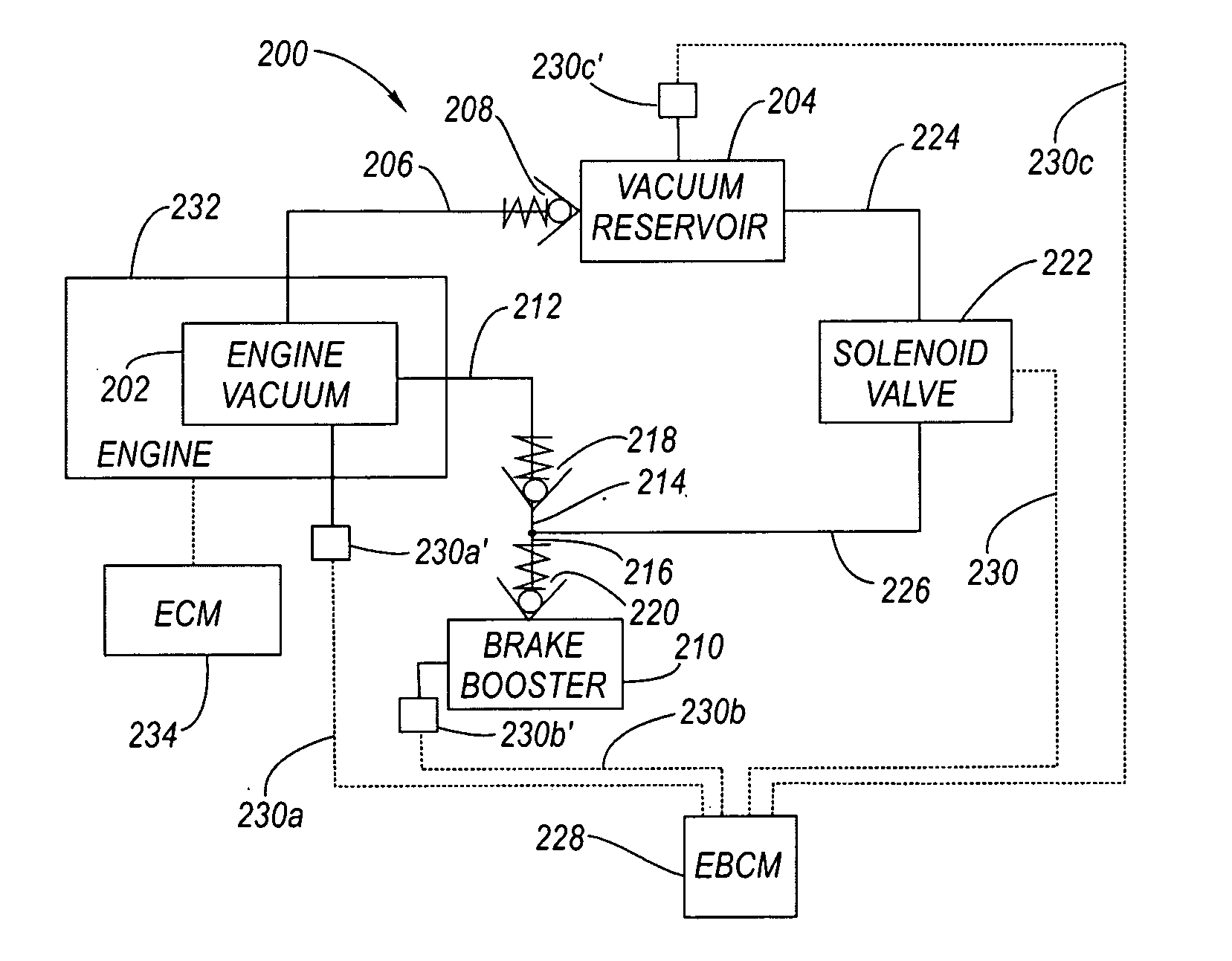Enhanced Brake Booster Vacuum Support
a technology of brake booster and vacuum support, which is applied in the direction of fluid coupling, servomotor, coupling, etc., can solve the problems of lowering reducing so as to improve the vacuum level of brake booster and mitigate the effect of less than optimal brake pedal performan
- Summary
- Abstract
- Description
- Claims
- Application Information
AI Technical Summary
Benefits of technology
Problems solved by technology
Method used
Image
Examples
Embodiment Construction
[0023]Referring now to the Drawings, FIG. 1 is a plot 100 of brake booster vacuum versus time from a cold start for a typical SIDI engine according to the prior art. In FIG. 1, the predetermined vacuum level threshold is threshold α, as for nonlimiting example approximately 30 kPa, depicted at point 104 of graph 102, whereat the time required to achieve the brake booster vacuum level of threshold α is, approximately, 37 seconds. From point 106 of graph 102 of FIG. 1, the time required to achieve a brake booster vacuum level of level β, as for nonlimiting example approximately 67 kPa is, approximately, 55 seconds. In general during a cold start event, approximately 30 to 60 seconds are necessary for present SIDI engines to produce a vacuum level for the brake booster greater than or equal to the predetermined vacuum level threshold, threshold α.
[0024]As stated hereinabove, vacuum levels, such as 30 kPa, are gage pressures as measured by a vacuum gage. That is, a vacuum gage pressure ...
PUM
 Login to View More
Login to View More Abstract
Description
Claims
Application Information
 Login to View More
Login to View More - R&D
- Intellectual Property
- Life Sciences
- Materials
- Tech Scout
- Unparalleled Data Quality
- Higher Quality Content
- 60% Fewer Hallucinations
Browse by: Latest US Patents, China's latest patents, Technical Efficacy Thesaurus, Application Domain, Technology Topic, Popular Technical Reports.
© 2025 PatSnap. All rights reserved.Legal|Privacy policy|Modern Slavery Act Transparency Statement|Sitemap|About US| Contact US: help@patsnap.com



